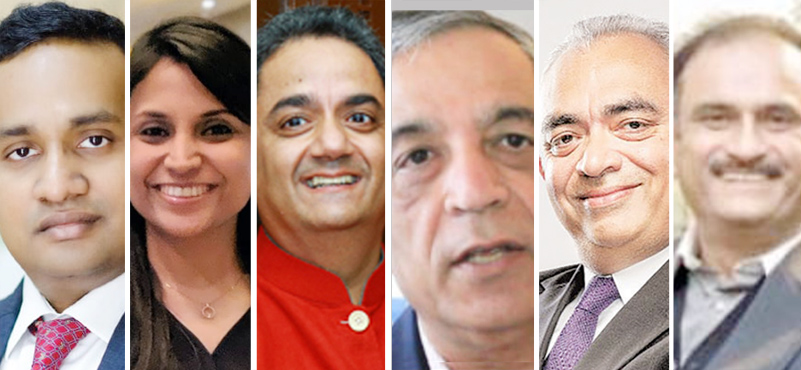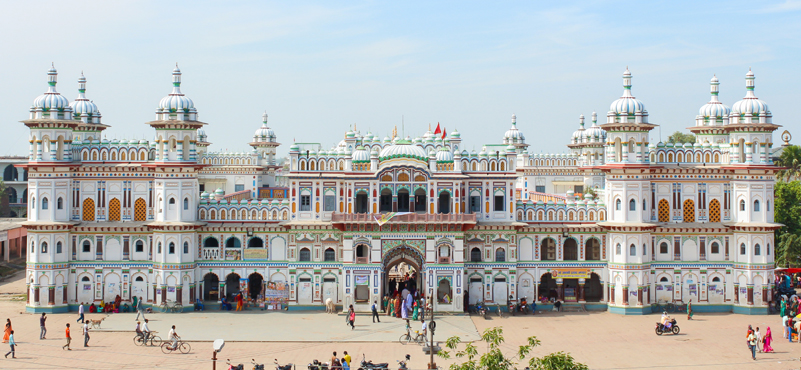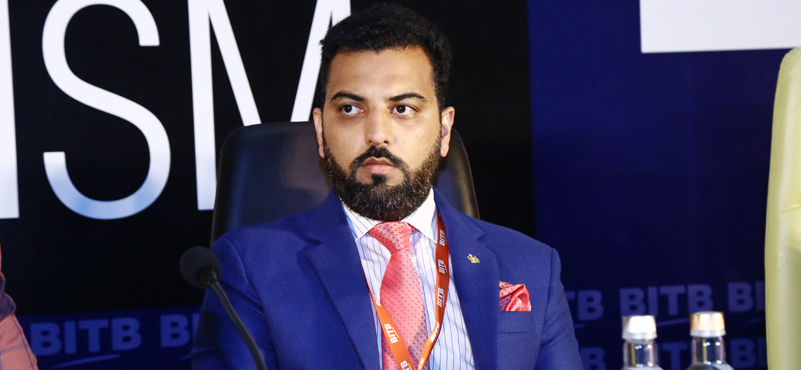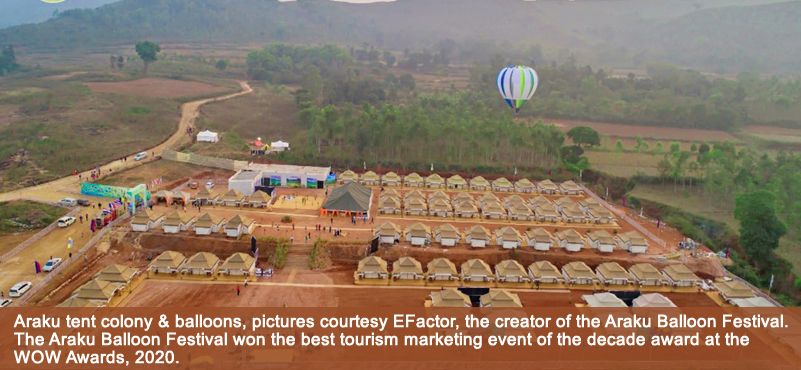The need for a resilience framework to ensure a stronger comeback for travel, tourism and hospitality sectors, has never been more profound. COVID-19-induced challenges have underlined the need for calibrating strategies to place tourism and travel, and related businesses, at centre stage for the state’s economic recovery. CII Delhi recently conducted an e-conclave titled ‘Building Delhi for a New World’ to highlight the challenges and moot the road ahead.
Senior industry leaders suggested opportunities and highlighted roadblocks, which needed to be addressed firmly to give the sectors their much-needed due.
A gamut of changes in policies and processes were suggested by panellists to bring about a transformative change in the tourism ecosystem. An overhaul of policies in the tax and clearance structure, a revamp of the Delhi Tourism Development Corporation and the need to boost consumption to drive big-ticket footfalls were highlighted by panellists. They also underlined the need for promoting the city’s tourism in its varied and holistic manifestation and resisting taking a myopic approach in promoting the city.
Panellists included Aditya Berlia, Chairman of the Confederation of Indian Industry (CII) Delhi State Council and Co-Promoter, Apeejay Stya and Svarn Group; Sweta Jhunjhunwala, Account Manager Travel, Google India; Manav Thadani, MRICS, Co-Founder, Hotelivate; JB Singh, President and CEO, InterGlobe Hotels; Navin Berry, Founder and CEO, Cross Section Pvt. Ltd.; and Vikram Bakshi, Convenor, CII Delhi Panel on Tourism & CEO and MD, Ascot Hospitality. Excerpts follow:
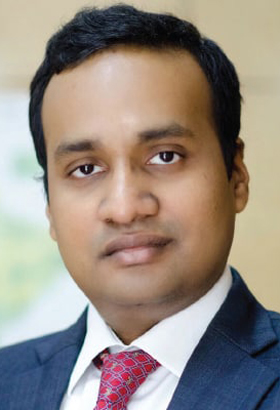
Aditya Berlia, Chairman of CII, Delhi State Council
The recovery of Delhi’s economic fortunes was intrinsically linked to the recovery of travel, tourism and hospitality sectors, professed Aditya Berlia, Chairman of the Confederation of Indian Industry (CII) Delhi State Council and Co-Promoter, Apeejay Stya and Svarn Group. Sharing how tourism had steadily added to the state government’s coffers, he noted that the e-visa regime had played a critical role in easing travel processes, catalysing a notable surge in international footfalls into Delhi. While tourists did visit numerous destinations, typically the likes of Jaipur, Goa and Kerala, a vast majority of them spent over a day in the capital, he said. Their stay had “benefited the city” immensely, he suggested, sharing that hospitality, trade and tourism accounted for upwards of 14 per cent of its Gross State Product, along with indirectly contributing between 5-10 per cent. The sector was critical for the state government as almost 55-60 per cent of its revenue was generated from GST and the service sector accounted for a sizable chunk of the total revenue, Berlia said.
He insisted that the lack of recovery of the sectors mentioned above was going to hamstring the government from taking necessary measures to combat the COVID-19 epidemic.
He believed that tourism was not only about creating employment and generating revenue but was central to shaping a favourable image of the nation, which, in turn, attracted foreign investments. Tourism had enabled India to project massive soft-power globally, that had significant implications for national security, opening up of new markets and the ability to conduct free trade, he believed. The first-hand experience of sampling the Indian culture, people and other aspects, exponentially increased the likelihood of global populace doing business with India and investing in the country. “People like to invest in a country they like to visit. Therefore, a great tourist destination ecosystem is not just about the tourism sector of the economy, but also about increasing investment(s) into India as a whole,” he said.
India has some catching up to do
India had a task cut out for itself, believed Berlia. France and Spain attracted upwards of 80 million international visitors, he enumerated, highlighting the glaring contrast between such nations and India. The difference was as much as four times and more, suggested Berlia, saying that neighbouring China too clocked more than 60 million footfalls. He stressed the depth of the international market and India’s inability in making a dent and garnering a fair share of the business pie.
COVID-19 had pushed the reset button on tourism globally, which was evident with issues faced by some of the major tourism markets, including China, he said. He believed that it was an opportunity for India to tap a larger market share and aim for a “two to threefold growth” in international inbound visitations in the next five years.
He cautioned against complacency, pointing out that many other nations, such as Japan, had already rolled out the red carpet and were offering a wide array of incentives. These included free air-tickets and accommodation in local hotels, which could act as a pull for discerning travellers, he insisted.
Berlia noted that the situation was vastly different in India as despite being a crucial contributor to the economy and employment, the tourism sector did not figure in the list of the government’s priorities. The omission was equally visible at the central and state levels, he said.
Delhi had mooted “transformative ideas” for 2020, which ironically was to be celebrated as the year of tourism, he informed. CII was leading the state government in the initiative to institutionalise new systems, and bring in attractions to position Delhi at par with some of the best destinations globally, he said.
However, Berlia noted that the time was not to rue missed opportunities but take stock of the road ahead. “We must look ahead, and even a semblance of a new normal would take three to six months,” Berlia said.

Sweta Jhunjhunwala, Account Manager Travel, Google India
Domestic travel was showing signs of recovery, Sweta Jhunjhunwala said. She shared that Google India had been “closely monitoring” consumer trends based on their interaction with the tech-giant’s platforms, such as Maps, YouTube and Search. The company was also undertaking several consumer surveys to better gauge sentiments and understand the genuine outlook on travel. The findings could enable the industry to pivot its offerings, allowing better alignment between the industry and the consumer, she explained.
Meeting one’s family was the most significant motivator for travel, she revealed. The trends also varied depending on the demography, as the younger generation, between the age of 25 to 35, exhibited a pent-up demand for couple travel, she added. Also, a sizable constituent, 25 to 35 per cent, was going to travel to nearby destinations and regions, such as APAC and Singapore, Jhunjhunwala said, noting that travellers were going to prefer short-haul and staycations.
Safety and hygiene taking preference above all else
The more significant challenge confronting the industry was whether it could create offerings for a new segment that had emerged during the pandemic, she said, stressing that the current momentum in India was “very slow.” The epidemic had also shaped consumer preferences in profound ways, as safety and hygiene were taking precedence over everything else, Jhunjhunwala informed. Health and safety had emerged as the most notable barriers to travel, she said, adding that consumers had educated themselves significantly on such matters and wanted to make an informed choice. However, the industry could not assuage those concerns by merely emphasising the subject but needed to showcase its efforts in a detailed manner. “The consumer wants hospital-grade cleaning and to look at videos on how you are maintaining hygiene and cleanliness, whether it is a hotel or an airline,” she substantiated. Jhunjhunwala noted that such initiatives mattered more to the consumer than merely a high-level of messaging around safety and hygiene. Financial concerns, flexibility in bookings and price-points had emerged as other critical concerns in deciding on travel, she shared.
How could the industry assuage consumers’ concerns
The industry could roll-out offers, such as “book now and pay later,” to encourage travel flexibly, she said. Consumers also wanted to minimise possible touch-points, leading to the greater importance of providing digital experiences for the industry, Jhunjhunwala advised. Airbnb had undertaken initiatives on similar lines, she shared, suggesting that digital experiences encompassed research, planning and booking, to the experience in the hotel. It also manifested in sharing the experience with the broader community, Jhunjhunwala added. “Such measures would provide the motivation and uplift the industry,” she argued.
She advised the industry to monitor the trends closely, to continually recalibrate strategies and offerings that were taken to the market by incorporating digital experiences.
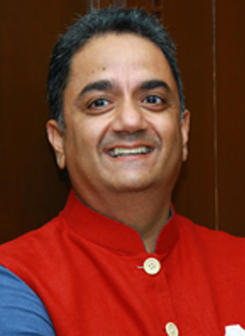
Manav Thadani, MRICS, Co-Founder, Hotelivate
The hotel industry was in the midst of arguably the worst global and local situation, Manav Thadani said, quipping that while his job, as a consultant, was to predict but he could not comment on whether hotels were going to be open tomorrow.
He outlined the challenges, noting that he was going to focus on policy aspects and believed that the industry’s challenges were exacerbated because of inconsistent announcements by various state governments on the feasibility of hotels’ operationalisation. The inconsistency was hampering planning, he suggested.
Despite intense lobbying by associations to ensure a better deal for the industry to tide over the ongoing crisis, efforts had borne negligible results, he said. Some state governments had provided interim relief by waiving off property taxes and deferring annual payments of some sorts, but the outcome had been a disappointment, Thadani noted.
Do away with the License Raj
The remnants of the License Raj were visible in the hotel industry, as it was one of the most heavily regulated sectors in the country, Thadani alleged. “It is one of the most complicated businesses,” he explained. Detailing the challenges in undertaking a hotel project, he shared that as many as fifty-three permits, on an average, were needed before one could start digging the ground to commence the construction. While the numbers varied from one state to the other, a builder required twenty-two post-construction and twenty-seven pre-opening approvals, which signified the complexity in doing business, he detailed. A hotel required a cumulative of one hundred approvals for functioning, which was stymieing the sector, he argued.
Thadani explained that permissions required dealing with multiple departments and the concept of ‘single-window clearance’ was mostly non-existent. One only needed seven pre and twenty-six post-approvals in Singapore, ten pre and four post-approvals in Sri Lanka and nine pre and twenty-two post-approvals in Bangladesh, he listed out, highlighting the stark difference between ecosystems in India and elsewhere.
Exorbitant cost structures unviable for businesses
The bureaucratic red tape was only one aspect of the challenge, he noted, informing that liquor licence fees were exorbitant and ranged anywhere from INR 3 lakhs to 56 lakhs, a far cry from rates in global markets. “Thailand has an administrative fee for serving alcohol, which is equivalent to USD 71. They charge an administrative fee for liquor, if you are running a restaurant and if you serve cigarettes. The total of all these three administrative fees is less than USD 200 per year,” he explained. Such low price-points had enabled locals to take the entrepreneurial route, evident in countless eateries and road-side stalls dotting the city streets.
He wondered about the quantum of GST and taxes that could be levied by the Delhi government if it allowed more people to open restaurants by easing norms and lowering the costs involved. “The state government could get taxes from a much larger vendor base, through liquor or GST. More importantly, it would create a lot more employment,” he suggested.
He also pointed out the absurdity involving the norm on the parking fee levied from hotels as it was benchmarked against the number of rooms in a particular hotel. He alleged that the state and central government had fallen short in providing adequate public transportation and wanted the private sector to foot the bill on its behalf. Budget hotels catered to travellers who probably did not even own cars, therefore, charging the hotel basis the number of rooms was an unfair practice, he suggested. He batted for linking the parking charges to the Gross Area for more transparency and justifiable levying of taxes.
Time to think ‘out-of-the-box’ solutions and approaches
Thadani said there was a lack of willingness on the part of governments to incorporate global best practices as most regulations continued from the past without any amendments. Some faulty practices incorporated by one state government, invariably, made way to other states too, he noted. He referred to the expense incurred by hotels in constructing underground parking, pointing out that many large cities, the world over, placed no such restrictions on the height of the building and allowed the construction of parking on the ground and upper levels. There was a need to bring viability to the business, he believed.
He argued that merely aiming at larger numbers of international tourists was not going to suffice and there was a need to develop the equivalent hotel infrastructure to service them. Governments needed to do away with a myopic view and look at new, ‘out-of-the-box’ ideas to generate revenue, Thadani advised.
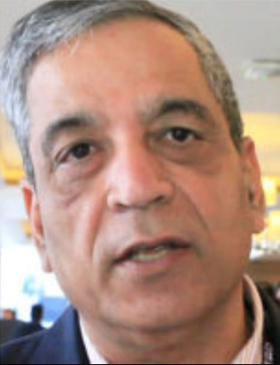
Navin Berry, Chief Editor, Destination India
Let hotels function as hotels: A knee-jerk reaction by the government to convert them as COVID-care facilities
Nain Berry concurred with Berlia on the importance of travel and tourism in enhancing the image and positioning of Delhi as a global city. However, he was quick to add that ‘tourism’ had been a much-maligned word and believed to be an elitist activity. Therefore, ‘travel and tourism’ was a better expression, Berry suggested.
The sector was in turbulence in Delhi as hotels had not opened up for business. He believed that recent developments had augured well and indicated the possibility of opening businesses and hotels. He noted that the Delhi CM had viable reasons to be involved in what he called a “knee-jerk reaction” of converting hotels into COVID-care facilities. Berry suggested that a negligible number of patients lodged in those hotels indicated that the situation was getting under control and the hotels could be allowed to commence their operations.
Berry believed that any calibration in travel and tourism, globally, nationally and in Delhi, mandated swift opening up of hotels by the Delhi government. He added that most hotels had already designed and implemented extensively refined SOPs, which had lent credibility to their operational preparedness. Referring to the PM’s assertion of finding ways to maintain continuity amid the COVID-19 crisis, he made a plea to CII and fellow panellists to join him in requesting the state government to declassify hotels as COVID-19 treatment centres.
Delhi attracted lakhs of visitors for travel and tourism, daily, through the extensive rail, road and air network connecting the capital with various cities, he said. However, the state had not devised strategies on conducting economic or development activities based on those footfalls. He termed it a “low-hanging fruit” and suggested undertaking some measures to tap the potential of the large-scale movement that was already underway.
Much like the Aerocity, which was an integrated economic zone catering to a more affluent class, business travel and conferences, highways around the city could be used to drive economic activities, Berry suggested.
Reconstitute Delhi Tourism Development Corporation to drive change
Delhi lacked a viable structure to drive tourism-related initiatives, alleged Berry. Taking a broader view of the challenges and bottlenecks in positioning Delhi as a desirable tourism centre, he argued that a serious restructuring of the Delhi Tourism Development Corporation (DTDC) was a prerequisite to mooting any long-term changes in the status quo. The Managing Director of the Corporation was often tasked with multiple portfolios, which typically took precedence over matters of tourism, and were of more pressing and urgent nature. “A sustainable change would not occur unless you change the structure,” he asserted. The restructuring of the governing body was going to lend stimulus to the tourism product of the city, he believed.
Don’t mistake hotels as the central tenet of the city’s tourism product
Hotels were not the sole or the most important aspect of Delhi’s tourism product, a mistake that often marred the industry’s vision of establishing Delhi’s tourism in global markets, he suggested. “We often mistake hotels to be the central tourism product. They are one of the products of the larger composite tourism product of Delhi,” he explained. Numerous new segments had emerged in the past one or two decades, such as heritage tourism, culinary tourism and walking tours, which were not even considered when envisaging the broader product and its positioning, he lamented.
He urged the industry to find ways of piecing together the diverse tourism offerings to define the “pull factor of the city” for the discerning tourist and traveller.
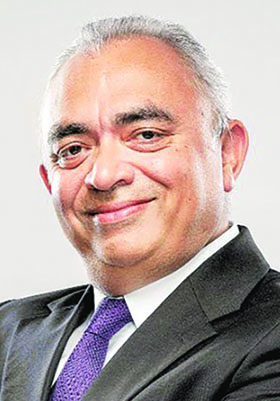
JB Singh, President and CEO, InterGlobe Hotels
India’s and Delhi’s unique challenges with no regional tourism
JB Singh agreed to Berlia’s comments on tourism possessing the soft power, adding that he believed tourism equally to be a platform for building national pride. He, however, contested Berlia’s numbers on international visitations, suggesting that it also included immigrant traffic. Therefore, the numbers lacked clarity on the actual count, he noted. He clarified that he did not mean to criticise but to highlight the opportunity for the industry. Countries registering high international visitations, such as France, Spain and China, piggybacked on regional tourism, which was either propelled by short-haul flights or excellent road connectivity with the neighbouring regions, Singh explained. India, unfortunately, did not have that luxury, he iterated, noting that the country’s tourism fortunes were hinged primarily upon the domestic segment and the incremental international visitations. This unique challenge further underlined the importance of creating a compelling tourism product, which possessed the adequate pull factor for the long-haul visitor, he explained.
He coaxed the government to do more and consider better communication to assuage stakeholders’ lingering corners. There was considerable merit in partnering with a health agency to build upon some form of communication and motivate travel and tourism, Singh argued. He suggested rolling out incentives, in the way of LTAs and double tax sops for those undertaking conferences.
Drive consumption-heavy initiatives to boost demand
He agreed with Berry on the need for restructuring the Delhi Tourism Development Corporation given its preoccupations, hindering its actual mandate of the growth of tourism, which he believed was “disturbing.” There was a broader question concerning the focus areas for creating the demand for travel and tourism in the city in the medium and the long-term, Singh reflected. Global cities attracted tourism by leveraging the demand created by events, experiences and “most importantly” branding, which were the basics of marketing, Singh said. Singh explained that countries, globally, held mega shopping festivals and such initiatives were driven around creating consumption. Such platforms enabled a succinct approach on strategising on domestic and international inbound, he said, reflecting that a “big bet” such as the Disney World was needed in the medium-term to catapult growth. “Sadly, we could not capitalise Formula1. We need large events and conference facilities. Hotels and restaurants will fill up and shopping will go up if Delhi hosts large-sized conferences and events. It will have a notable impact on boosting the state’s GDP,” Singh emphasised.
He shared the example of France and how several events, such as the film Festival and the tennis tournament, fed off each other. These were cross-industry initiatives and such an approach could bring great results for India, too, he elaborated. India also required a collaborative approach among neighbouring states to work towards driving tourism, he suggested.
A vision needed to decide on the roadmap
A larger vision for tourism was needed to drive consistent demand for tourism and related services, he asserted, adding that countries such as Vietnam and Azerbaijan had conceptualised a roadmap for tourism for 2030. However, such a longer-term strategic vision for the sector was absent in India and Delhi, he said. “The vision must be created for tourism, keeping the entire industry together and creating a robust task force,” he believed.
Data matters
Data was all-powerful and could be tapped to understand the nuances of the consumer behaviour, Singh believed. He expressed his pleasure on having a Google representative on the panel, noting that the process of digitisation could be leapfrogged by developing an understanding of how consumer decisions were being made.
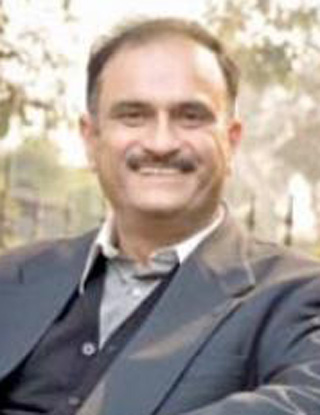
Vikram Bakshi, Convenor, CII Delhi Panel on Tourism & CEO and MD, Ascot Hospitality
It was not possible to examine a resilient framework without first analysing how to survive the COVID-19-induced crisis, Bakshi argued. He shared that the committee, he represented, had made several requests to the government for urgent interventions. These included a waiver of fixed charges on electricity, charging for water at domestic rates, if at all, and waiver of renewal charges, particularly on liquor, apart from waiver of the license fee and property taxes, Bakshi enumerated. He believed that it was important to detail the efforts made by the committee to provide some semblance of relief to the industry, which was reeling under an unprecedented crisis.
He compared the “focussed” efforts made by Himachal Pradesh government to that of the Delhi government to underline the distinct ways in which two state governments, much different in size, had approached the issue.
He shared that the forum had conducted a seminar a year ago to focus on ways to ensure that a traveller spent one extra day in the city. The city of Delhi had arguably the best infrastructure, among all cities in India, with a well-laid out network of metro rail, roads and an international airport, he said. He also highlighted that the city was full of diverse tourism products, including heritage and shopping, which already existed and was doing well. The challenge was to create the ease of business, he said, agreeing with Thadani on the most significant challenge in driving travel and tourism. The key was to have more people provide good-quality services to the consumer at low costs, he argued. He believed that the industry needed to convince the government to do away with the “variety of license fee.” “Even if the license fee exists, they must come at extremely low costs,” he said.
Delhi had yet to examine the opportunity of creating a mass market, which was necessary to encourage travellers to spend that extra day in the city, Bakshi said. He believed that such a step was going to put Delhi on the right course and the city’s tourism could “move in the desired direction.”

